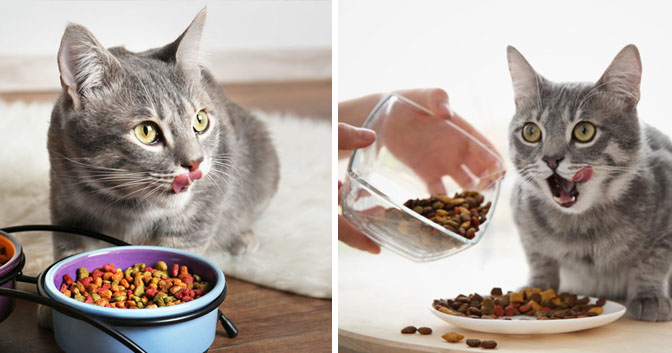Cat Nutrition is very important for pet lover. Mealtimes are an excellent opportunity to bond with your cat, but it can be difficult to make it fun for both of you every time. Cats are unique, and they may have various tastes, odors, and textures when it comes to food. The first step in feeding a cat is to find a meal she enjoys that is both complete and balanced.
Other elements to consider include the sort of dish you use, the placement of the dish, and how much and how frequently you eat. Mealtimes can be transformed into a time for connection and relaxation with the help of our specialists.
How to Feed a Cat (Cat Nutrition)
1. Select the Best Cat Food
The first step is to select the best food for your cat. Consider your cat’s age, weight, overall health, and whether or not she is an indoor cat. Kittens require kitten food, however cats over seven years old may benefit from senior cat food. Cats in the middle of their lives can flourish on an adult maintenance formula.
You can select a food depending on her age and other needs, such as hairball control, as well as a choice of flavors and textures. You can feed dry, moist, or a combination of the two to your cat. Chicken or fish flavors and textures might range from crisp to creamy. You may need to try a few before you find something your cat like.
2. Determine the Amount of Food Required
Whatever type of food you choose, it is critical that you provide the correct amount each day. Overeating can result in weight gain, which can lead to various health issues. To determine how much to feed your cat each day, consult the feeding directions on the cat food label. If your veterinarian determines that your cat has gotten overweight, you must reduce the recommended food amounts to avoid overfeeding. This is one of the important fact for Cat Nutrition.
Keep in mind that spaying or neutering reduces a cat’s energy requirements by about 30%, which can lead to weight gain. Consult your veterinarian about how to modify your cat’s diet following surgery to avoid weight gain.
3. Create a Feeding Schedule and Routine
A feeding regimen will help your cat understand what to expect at mealtimes and will make the experience more enjoyable for both of you. You may put out an entire day’s worth of dry food in the morning and cats can graze on it all day.
You or your cat can divide the total amount of food each day into two or three meals if you wish. Wet cat food should be consumed within 20 to 30 minutes of being served, and any leftover food should be refrigerated and consumed within 24 hours of being opened. You can also use a chilled, automatic feeding bowl to provide your cat with wet food when you are not present.
4. Select the Appropriate Feeding Dish
Cats’ whiskers aid in navigation, determining the breadth of openings, and even communicating their mood. Deep dishes with high sides may irritate your cat’s whiskers, affecting her eating pleasure. This is known as “whisker stress” and can be irritating to her.
The best cat bowls or plates are shallow, wide, and have a thin lip. These bowls allow your cat to feed without causing irritation to his whiskers. A shallow bowl also allows her to be aware of her surroundings while she eats, which helps put her at peace. Wide bowls or plates can collect any errant bits of food, making cleanup easy when she’s done.
5. Locate a Good Location
It may be more convenient to position your cat’s food dish in a corner out of the way, but this can irritate your cat. Food location is considerably more critical if you have multiple pets. In the wild, cats feed while keeping a full view of their surroundings to identify any approaching predators.
Put your cat’s food bowl in an area with unrestricted vistas rather than a corner to make her feel more at ease during mealtime. If you have additional pets, consider placing her food bowl on a higher surface where other creatures cannot reach.
6. Examine Feeding Toys
Feeding toys are an excellent way to add extra play and delight to your cat’s mealtime. Puzzle feeders and food distributor balls stimulate your cat’s natural hunting instinct. These feeding toys can keep cats entertained throughout the day and give much-needed mental stimulation. They’re also beneficial for overweight kitties.
They consume a little bit at a time and are active while doing so, rather than ingesting a complete day’s worth of food all at once. Check the toys at the end of the day to ensure your cat ate all of the food.
7. Remember to stay hydrated
Hydration may not be the first thing that comes to mind when considering how to feed a cat, but it is vital to her general health. Many cats do not consume enough water. In the wild, stagnant water frequently indicates the presence of bacteria or parasites, so cats instinctively avoid it.
Your cat may react similarly to a bowl of water left out. Replacing the water on a regular basis (and using the proper sort of dish) can assist. Many cats enjoy running water, so you might also try a cat water fountain. However, some cats may be terrified of the noise made by the fountain, so it may or may not help.
Wet cat food can also give additional hydration for your cat. Following these recommendations will assist whether you’re bringing home a new cat or want to make mealtimes with your present kitty more joyful.

